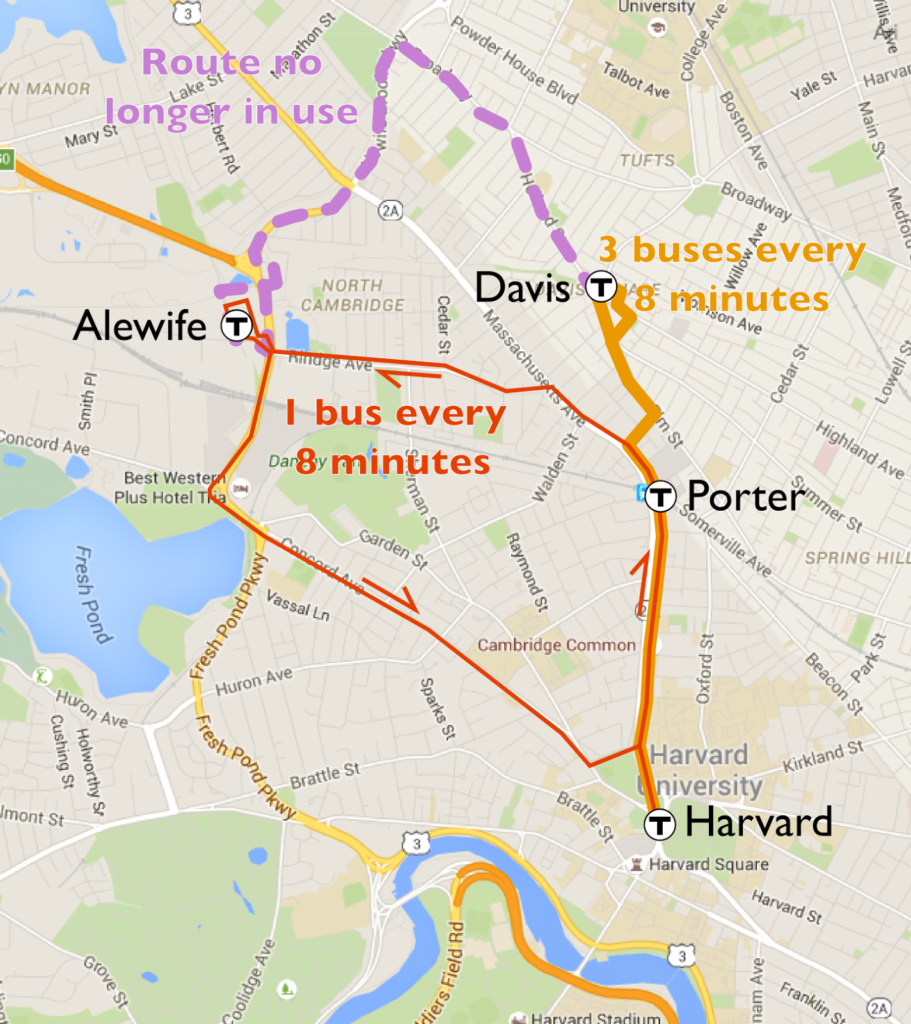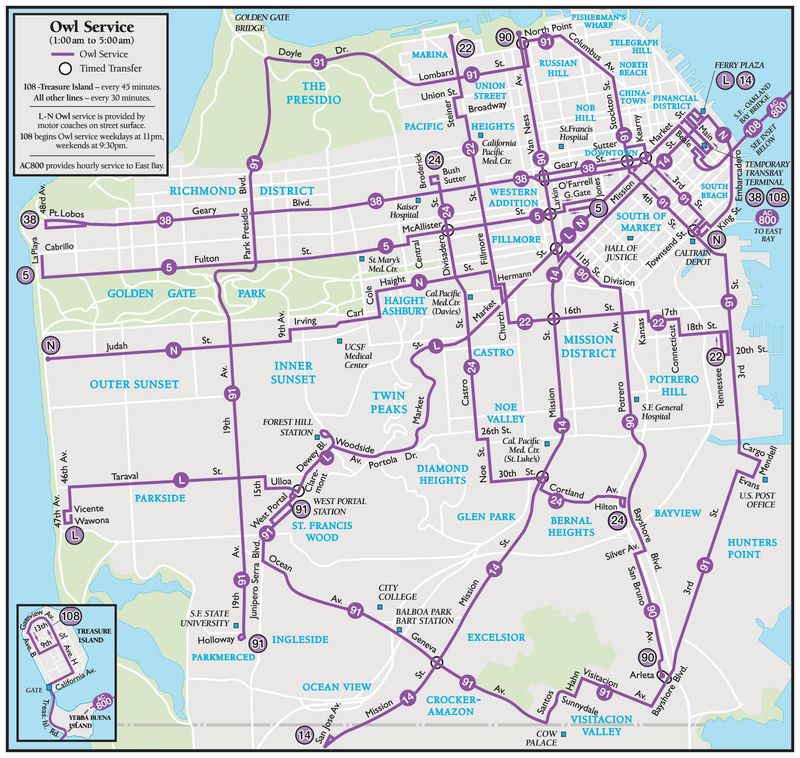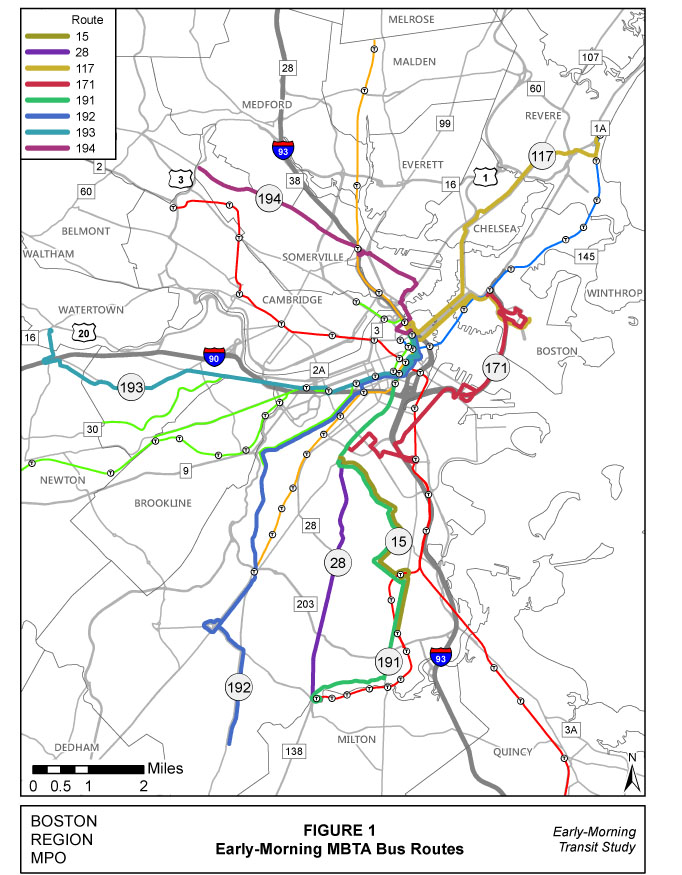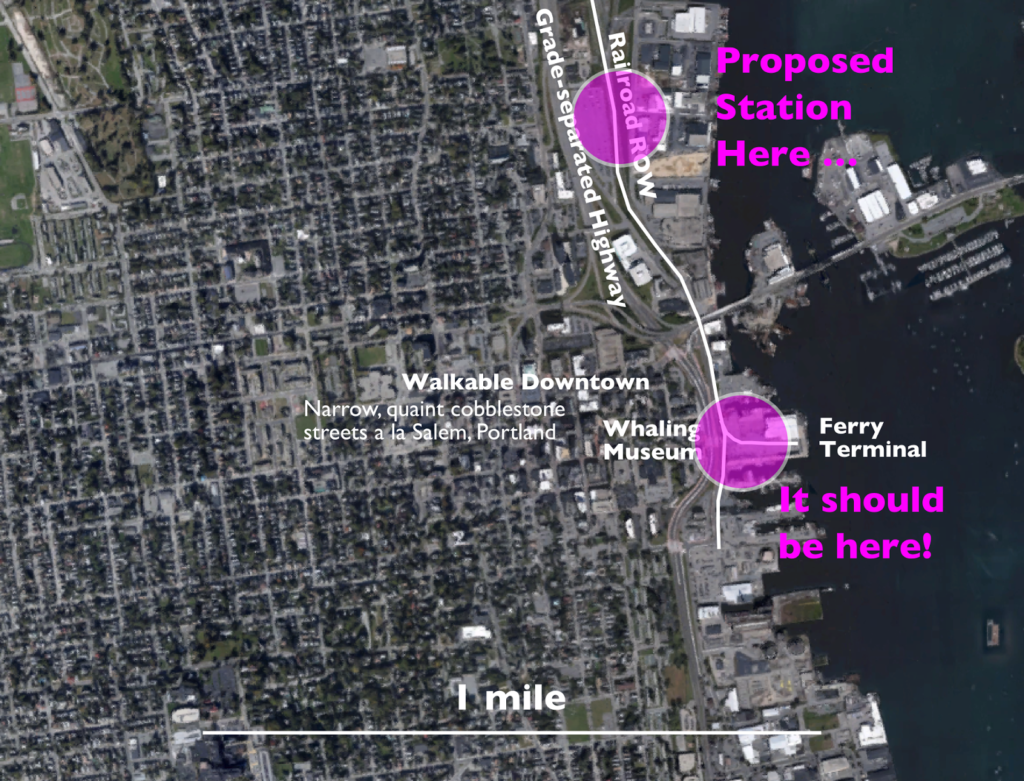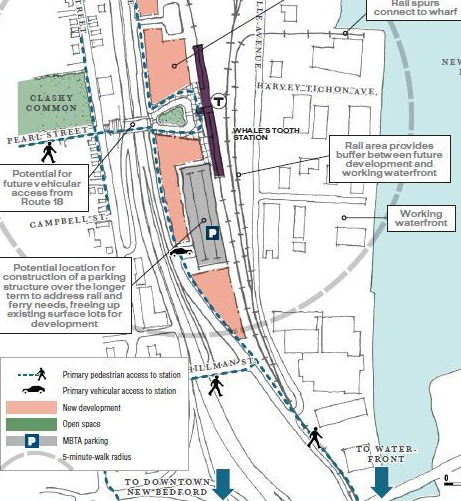The MBTA’s Control Board recently produced a document talking about spending several million dollars on a Houston-style network redesign. While the MBTA certainly needs help running their buses, what happened in Houston, for lack of a better phrase, should probably stay in Houston. The transit systems (and the cities themselves) are quite different, and the issues the MBTA has with its buses are far different than those in Houston.
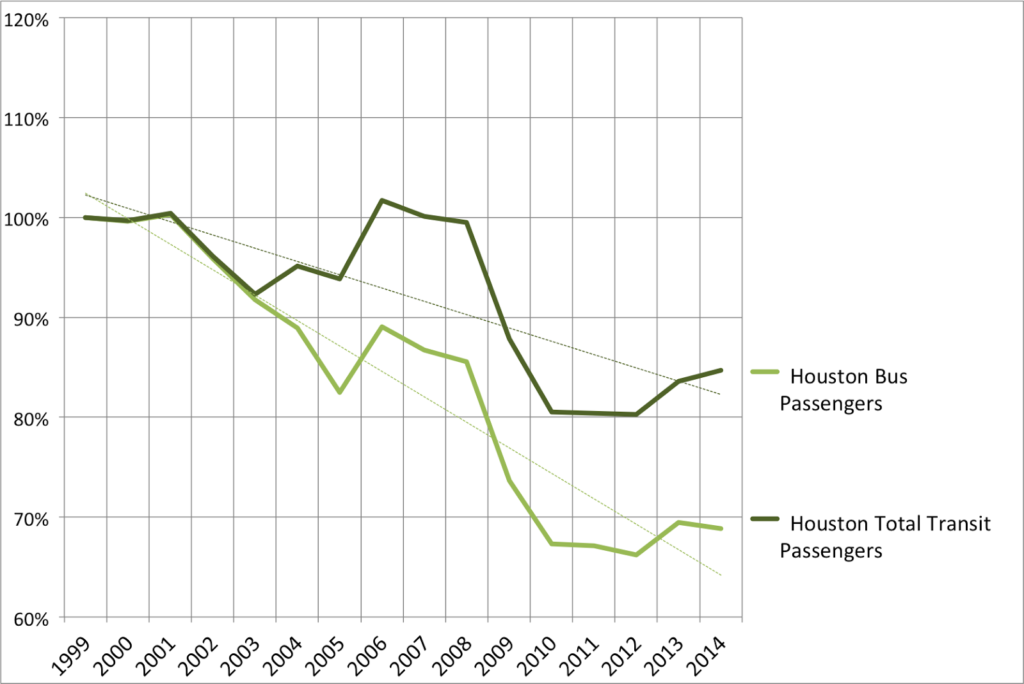 |
| Houston transit ridership, 1999-2014. Data from NTD. Normalized to 100% in 1999. |
Houston did not redesign its network not necessarily because it is forward thinking, but—and this often goes unreported—Houston’s existing network was failing. (Looking at the top ten pages on Google about the network redesign, only one mentions the loss of ridership.) In 1999, Houston’s transit agency carried about 100 million passengers per year. In 2004, despite a new light rail line opening, overall ridership had dropped to 95 million, with fewer than 90 million on buses. Ridership stayed flat around 100 million until 2008, when it cratered.
By 2010, total transit ridership was at 81 million, with bus ridership at 66 million. In other words: Houston, we have a problem. It’s since recovered slightly, but transit ridership is still down 15% from 2000, with bus ridership down by 30%. If the MBTA lost 30% of its ridership, it would be in full-on crisis mode. And this took place over a time when Houston’s population grew by 25%, so transit rides per person per year declined from 21.2 to 14.4. (No wonder Houston’s big new roads do little to relieve congestion.) By comparison, Boston’s metropolitan area has 86.5 transit trips per year (on the MBTA alone, likely slightly higher if you include RTAs within the area).
Bus ridership didn’t decline simply because Houston ran fewer buses, as is the case in many cities. Service hours did climb slightly between 1999 and 2003, and were subsequently cut slightly when the light rail line opened. Still, Houston ran more bus service (as measured by revenue hours) in 2014 than it did in 1999, yet the system carried 30% fewer passengers. In 1999, the system carried 35 trips per revenue hour. By 2014, that number was down to 24. (In Boston, buses carry 50 trips per revenue hour. For comparison, single train cars carry more than 100.)
It was clear to Houston’s planners that they had a major service issue with their bus system: vehicles were being used inefficiently and were not providing service where it was needed. Instead of doubling down on a failing system, they made a cogent decision to completely rebuild the network, reallocate resources to focus more on frequent service, and use a geographic resource—the straight and often wide street grid—to provide a system which would be more useful to the current population and destinations. The goal is to increase ridership using the same number of vehicles, and given the recent decline in ridership, there should be plenty of spare capacity.
This made sense—a lot of sense—for Houston. It would make very little sense for Boston.
Unlike Houston, Boston does not have spare resources to reallocate. At rush hour, most buses in Boston are at—and frequently over—capacity. This is not the case in Houston. Most frequent bus lines there run every 10 or 15 minutes at rush hour. This is frequent enough to provide “walk-up” service, but shows that there is not a major capacity crunch; if there were, buses would be run more often. One bus line (the 82) and one rail line in Houston run more frequently than every 10 minutes at rush hour. Even with the new route network, there is still a lot of spare capacity on Houston’s buses. (Despite carrying 2/3 as many passengers—the networks carried similar numbers of passengers in 2000, but have since diverged—Houston runs 20% more service hours than Boston does.)
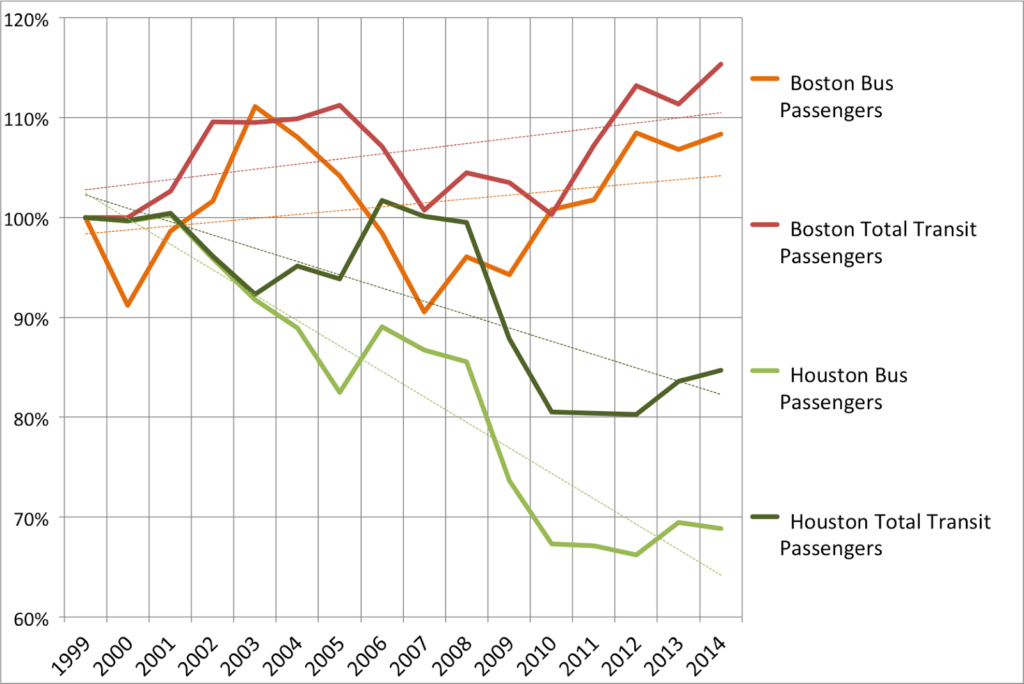 |
| Houston and Boston transit ridership from NTD. Normalized to 100% in 2009. Note: Likely data error showed a spike for Boston bus ridership in 2004. This has been removed for chart simplicity. |
This is far from the experience in Boston. In addition to nine rail lines operating more frequently than every 10 minutes, there are 21 bus routes which do the same. There are many others which are well over capacity, yet there are not enough buses to go around to provide enough service on these routes. The 47, 64 and 70 are all at crush capacity—often leaving riders behind—even though they only run every 10 to 20 minutes at rush hour (and that’s just a non-random sample of routes which run within a stone’s throw of my house in Cambridgeport). This is an entirely different problem from Houston—nowhere in the Space City is there a bus line like the 7, 73 or 111 where a full bus runs ever four or five minutes—and it requires an entirely different solution.
Unlike Houston, transit ridership in Boston has been growing, outpacing many other cities and the local rate of population growth, without any new infrastructure having been built in decades. Overall transit ridership is up 15% since 1999, and bus ridership up nearly 10%. Can Boston’s ridership be attributed to increase service hours? No, bus service hours have been basically flat since 1999 (and not “basically flat” by the FMCB’s definition, but actually flat, up less than 3% since 1999, despite the addition of the Silver Line during that time). So buses have been getting more crowded, not less.
This leaves out three other major factors which would preclude a Houston-style program in Boston. First, Boston’s geography is not grid-based, but relies on a few corridors linking more central nodes. Most of these routes already have buses, usually traveling in relatively straight, logical lines (with some exceptions). Second, Boston does not have the level of sprawl that Houston does, and attempts to serve low-density job centers will be inherently less efficient than the current urban core-based transit system (in Houston, the old core-based system was not seeing enough use, which is certainly not the case in Boston). Finally, rail ridership makes up two thirds of Boston’s overall transit ridership (only Boston, New York Washington, D.C. and Atlanta carry more passengers by rail than by bus) and the bus network logically feeds in to the rail network, which can’t be easily changed.
According to Jarrett Walker on Here and Now, two thirds of the routes in Houston were new, with smaller changes to the rest. In Boston, a reimagined system would likely result in most routes being largely unchanged—I’d venture to guess that it would be 80% of routes, and 90% of routes weighted by ridership, since higher-ridership routes would be less likely the be changed—and only a few areas would see dramatic reorganization. This is not to say there aren’t changes that should be made: routes should be straightened (the 34 and others which make mid-route loops to serve malls), made more logical (the 70), have anachronistic quirks ironed out (the 66 jog to Union Square) or, in some cases, be blown apart altogether to provide better connections (break up the 47!).
None of this reaches the level of what was done in Houston, where there is a lot of slack to provide rides for more passengers with the existing bus fleet; they could increase ridership by 50% and still be shy of bus ridership in 1999, and far from the crowding the T sees on a daily basis. There is no spare capacity in Boston for that kind of growth without a dramatic increase in the size of the fleet. If we are really going to improve buses in Boston, we need more money to run more buses.
If that money—and the facilities to house an enlarged fleet—is unavailable in the short term, what can be done is a wholesale program to make the buses we have work better. The problem is not that the routes we have don’t work for people (for instance, the 77 does, and should, run down Mass Ave), it’s that the way the buses run on these routes doesn’t work (it shouldn’t have to sit at a traffic light while two or three cars cross in front of it). Buses with 50 passengers on board sit in the same queues as cars with one, and other than a couple miles of Silver Line lanes, there are no transit priority features in Boston. There has been some nascent movement towards solving this in recent months, but it needs to go much further. If we are going to spend several million dollars on improving buses—as the FMCB proposes—let’s make sure we do it in a way that works for Boston, not Houston.

